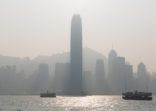| Monthly net sales in RMB m | Northbound | Southbound |
| April | 67.4 | 8.8 |
| March | -10.2 | 4.7 |
| February | -181.6 | 3.6 |
| January | -286.1 | -2.4 |
| December | -410.9 | -1.3 |
| November | -300.7 | 1.7 |
| Total net sales since January 2016 | 7,362.0 ($1.1bn) | 110.9 ($16.1m) |
Source: State Administration of Foreign Exchange
In terms of gross sales, Hong Kong’s five funds selling in the mainland (northbound) collectively had RMB 370m ($53.7m) last month, down from RMB 508m ($74m) in March, though outflows slowed considerably.
Meanwhile, southbound funds — about two dozen mainland funds selling in the SAR — also showed an increase in gross sales, with a collective inflow of RMB 16.6m in March versus RMB 7m in February and RMB 5m in January.
Since February 2016, Chinese regulators have halted approval of new MRF funds intended for sale in the mainland. Additionally, since 2015, regulators stopped granting new quotas for two outbound investment programs, the Qualified Domestic Institutional Investor (QDII) and the Qualified Domestic Limited Partner (QDLP) scheme.
But the QDLP scheme is likely to roll out new quotas as early as next month, according to a Reuters report. QDLP allows foreign fund houses to raise money onshore from non-retail investors and invest in overseas products.
The regulator is likely to grant new quotas to about six managers, each quota totalling $50-$75m, according to the report, which echoed comments from China consultant Z-Ben Advisor.
The last round of QDLP quota issuance was in October 2015. So far about 15 firms have been granted $50-$100m of quota each since September 2013.
Three-year performance of the five northbound MRF funds selling in the mainland, versus the China equity benchmark FTSE China A50 Index and Citi’s Asian Broad Bond Index, according to FE.


















